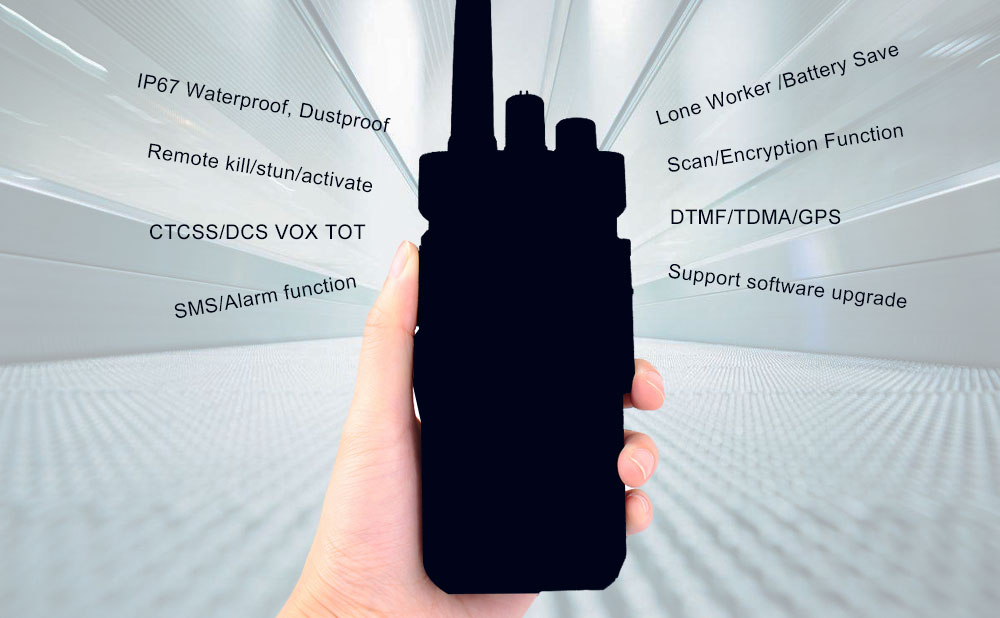+86 15093323284 hams@ailunce.com
Explanation of Walkie-Talkie Function Terms

Sometime we don't know the radio functions clearly. Here we can know something about them.
1. MONITOR
A mode of listening used to receive weak signals. By pressing the special button to force on the receiving signal channel, the operator USES the ear to identify the weak sound in the loudspeaker to achieve the purpose of listening.
2. Scan
A listening method used to hear signals on all channels.
By pressing the scan special key, the receiving circuit receives channels one by one in a certain order for a period of time to receive the signals in the channel. If the receiving time of each channel is 100ms, ten channels can be scanned every second, that is, the scanning speed is 10ch/s.
3. Priority Channel Scan
Scan the priority channel during the scanning process.
4. Delete/Add Scan Channel
Deletes or adds a channel from a scan list to a scan list.
5. VOX
When this function is activated, no need to press the PTT key,Can be directly through the voice launch operation.
6. Time Out Timer
This function is used to limit the user over time transmission on a channel, and also to avoid radio damage caused by long time transmission.
7. Battery Save
Save electricity and extend the standby time.
During a period of time, No transmit receiving and keystroke operation. Radio will work in a way that shuts down for a while and turns it on for a while,This way is called energy saving. The switching time length ratio is about 1:4. When the signal is received or the key is pressed, the radio immediately exits the power-saving state and enters the normal state.
8. High/Low power
This function allows users to choose high or low power according to the actual situation.
9. Busy Channel Lockout
When use this function, the user is forbidden to transmit signals on busy channels.
10. Squelch Level
During receiving signals, the intensity of the noise corresponds to the intensity of the signal, and the stronger the signal, the weaker the noise. The maximum noise and the minimum noise are divided into several levels, each level is called a Squelch level.
11. CTCSS/CDCSS
Use this feature to avoid receiving irrelevant calls.
12. 2-TONE/DTMF call selection function
Call the appropriate radio using 2-tone or DTMF signaling options.
13. Reverse Frequency
When using reverse frequency function, the transmitting and receiving frequencies of the radio will be exchanged. and the set signaling is also exchanged.
14. Talk Around
When using Talk Around function, The radio transmit frequency will be same as the receiving frequency.
15. Auto-Transpond
When the intercom receives a properly coded call, it sends a signal to the caller in response to the call.
16. Emergency Alarm
Press the special alarm key, the radio will send the maximum sound or the predetermined alarm code to other handheld devices or base stations.
17. Keylock
Use this feature to prevent key misoperations.
18. Battery Indicator
Display radio battery level.
19. Backlight
For radio operation at night or in dim conditions, you can see the radio LCD display and buttons.
20.Modulation
To control the variation of the carrier parameters by one or more of the parameters of the modulating signal,
According to the different control parameters, modulation can be divided into amplitude modulation, frequency modulation and phase modulation.
21. Audio
Audio refers to the sound frequency of a person speaking. Usually refers to the frequency band of 300Hz-3400Hz.
22. Carrier
Voice, digital signals, signaling and other useful signal carrier, easy to transmit high-frequency electromagnetic waves.
23. Channel and channel spacing.
Channel refers to the frequency value occupied by transmitting and receiving. The difference in frequency between adjacent channels is called channel spacing. The required channel spacing is 25KHz(broadband), 20KHz, and 12.5KHz(narrowband).
24. 2-TONE
2-tone signaling consisting of two audio signals, A Tone + B Tone.
First send A Tone for a period of time, and then send B Tone after A period of time. The 2-tone signaling can be used to select the corresponding radio.
25. 5-Tone
5-Tone is the same as the two-tone, but it is composed of five frequencies.
If you want to learn more about those functions, you can refer to this link:
https://www.ailunce.com/Home/FeatureGuide











